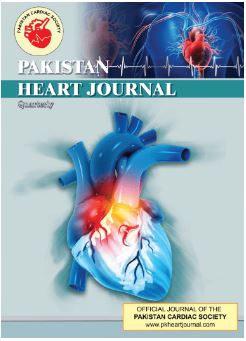In-vivo evaluation of Topical Niosomal Gel containing Loxapine Succinate for the Treatment of Schizophrenia
Main Article Content
Abstract
The utilization of the antipsychotic medication Loxapine succinate on a daily basis is prevalent. Currently, there exist two distinct categories of dosage forms that are readily accessible in the market: capsules and injectables, specifically those administered intramuscularly. Nevertheless, individuals with psychosis encounter difficulties in adhering to the prescribed dosage forms on a daily basis, and at times, the administration of these forms proves to be challenging. The objective of the present study was to develop a niosomal gel formulation containing Loxapine succinate, with the aim of utilizing it for the management of schizophrenia. Niosomes were prepared through the implementation of a thin film hydration technique, utilizing different proportions of surface-active agents (Span 60, Span 80). The assessment of the vesicle size, entrapment efficiency, in-vivo release study, stability analysis, pH, viscosity, drug content, and homogeneity of the gel were conducted for the Loxapine succinate topical niosomal gel formulations.These benefits include enhanced patient compliance, improved skin retention in terms of both quantity and duration, heightened therapeutic efficacy, and reduced drug toxicity. This research aims to investigate the potential of the niosomal drug delivery system in providing a consistent and prolonged release of Loxapine succinate while mitigating the adverse effects associated with its oral administration. The sustained activation of the entrapped drug will lead to a reduction in the adverse effects associated with frequent oral administration of the drug. This implies that the utilization of topical niosomal gel-based drug delivery systems may serve as a valuable method for administering Loxapine succinate.
Article Details

This work is licensed under a Creative Commons Attribution-NoDerivatives 4.0 International License.

